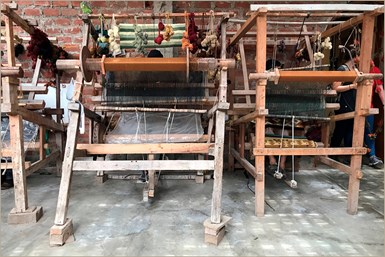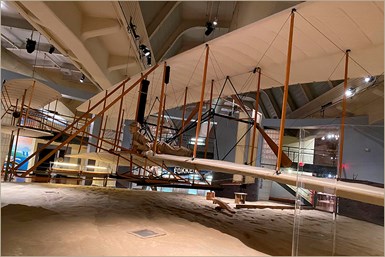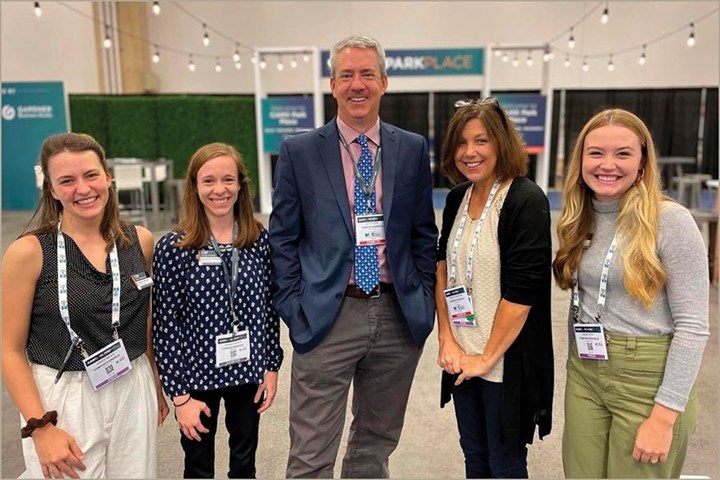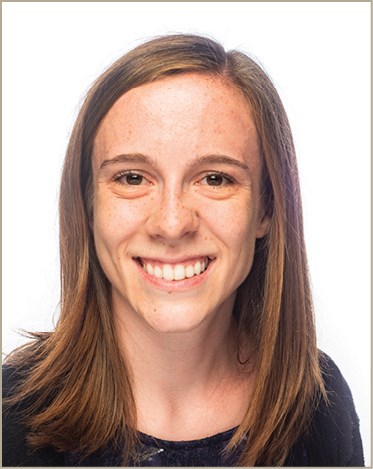Learning to Weave Together Industry Stories
Hannah Mason, Associate Editor at CompositesWorld, reflects on the ongoing learning process that is part of a Gardner Business Media editor job.
#copywriting
Employee Spotlight Profile
Hannah Mason, Associate Editor, CompositesWorld
“So, what’s a composite?”
I started on the editorial staff of CompositesWorld at Gardner Business Media in August 2018, and a few months later, found myself at my first CAMX industry trade show.
I’d done a bit of science and technical writing before starting at CompositesWorld, and had interned at the brand’s parent company Gardner Business Media for several months before coming on full-time, but I’m not sure I was fully prepared for all I had to learn. So, I asked a lot of questions.
One of the answers I received that has stuck with me over the past few years, though I don’t remember now who told it to me, was: “Back in the day, the Wright brothers built airplanes out of fabric and glue. Then, we switched to metal. Now, we’re building airplanes with fancier fabric and glue.”
Composites – advanced materials made up of fiber-reinforced (fancy fabric) polymers, and sometimes attached via adhesive bonding (fancy glue) – were a completely new industry to me at the time, and I spent much of that show walking around talking to people and trying to learn what was so interesting about these materials that we could publish a monthly magazine about them.
Turns out, a lot.
On my first day in August of 2018, I was asked to read the past year’s worth of magazines and to study a bunch of documents labeled “Composites 101.” All of which was tremendously helpful, but at that first trade show a couple of months into the position, shadowing our own knowledgeable (and ever-patient) senior staff and talking to industry professionals for the first time, I recall really beginning to get a sense for what I was getting into. What a wide variety of materials and manufacturing processes there are, the array of software and equipment available to support these materials and processes, and the seemingly endless applications for these materials (including, yes, airplanes).
Driven by emerging market applications and a lot of talented and creative people, it turns out that this industry is constantly growing and evolving, meaning we can’t possibly capture everything in a monthly magazine (though we of course try).
Earlier in 2018, before I had even heard of composites, I had the opportunity to visit Peru with a study abroad group during my last semester at the University of Cincinnati. One day, we visited a traditional artisan shop that specialized in hand-woven rugs and fabrics. The shop owner demonstrated to us and explained, via a translator, how they take wads of alpaca wool, hand-spin it into yarn with the help of a simple wooden winder, color it with handmade plant-based dyes, and weave it by hand on wooden looms.
Three years later, I’ve recently been reminded of some of these early lessons I learned about how materials are made and the connections between composites and the industry. While learning about an automated weaving system from startup WEAV3D Inc., for example, I thought about those wooden looms and was blown away by how far weaving and textiles have come. While touring Oak Ridge National Laboratory’s Carbon Fiber Technology Facility (CFTF) in Tennessee, which houses an incredibly high-tech version of spinning material into fiber, I was reminded of hand-spun alpaca wool. Talking to engineers at Firefly Aerospace about how their carbon fiber composite Alpha rocket made me think of how many innovations air- and spacecraft have gone through since the Wright brothers built their first plane.
More importantly, I’m constantly reminded of how much there is still to learn as technologies advance – like large-format and continuous-fiber 3D printing used to build houses, more sustainable sailboats, or autonomous underwater vehicles. Or how composites are being used to enable next-generation renewable energy operations like wind, hydroelectric power, wave energy and rotor sails. Or even crazy applications of composites you’d never expect, like museum dinosaurs, or a whale-shaped statue so strong and durable that it caught and saved a runaway train (true story).
I still ask a lot of questions – hopefully better ones than “what is a composite?” – but one thing I know for sure: As an editor, there’s always more to learn, to challenge you, and to surprise you – about the industries we write about but also about new tools and platforms, and the craft of writing itself. I’m thankful for the opportunity to learn from those who’ve been doing this way longer than me, at trade show booths, through Microsoft Teams calls, walking through fabrication and research facilities and learning from the talented folks around me at Gardner Business Media and the CW team.



A knowledgeable team and industry events are great places to learn more about an industry. Here’s the CompositesWorld team at this year’s CAMX trade show.
Need more information?
Hannah Mason, Associate Editor
LinkedIn
CompositesWorld
About the Author
Hannah Mason
Hannah Mason writes about the ever-evolving technologies of the composites manufacturing world as an associate editor for CompositesWorld at Gardner Business Media. She began her career at GBM in 2018 as an editorial intern, and before that wrote or edited for several consumer, academic and marketing publications. Hannah earned an M.A. in Professional Writing from the University of Cincinnati in Ohio, and a B.A. in Writing and Literature from West Liberty University in West Virginia.
RELATED CONTENT
-
Insightful Writing Involves Meaningful Relationships
Lori Beckman, Senior Editor, Production Machining, says writing is more enjoyable when surrounded by good people who share a common goal and feels fortunate to have created strong connections and friendships while doing her job.
-
How to Use ChatGPT in B2B Content Marketing
ChatGPT is an AI-powered tool that can allow marketers to produce high-quality content in a fraction of the time it would take manually. Here are some opinions and tips on how to use ChatGPT from an experienced writers’ team.
-
Bad Press Releases: 14 Rookie Mistakes to Avoid
A bad press release can sink your marketing campaign. Improve your impact and cultivate a strong brand presence with your audience by avoiding these 14 common mistakes.


